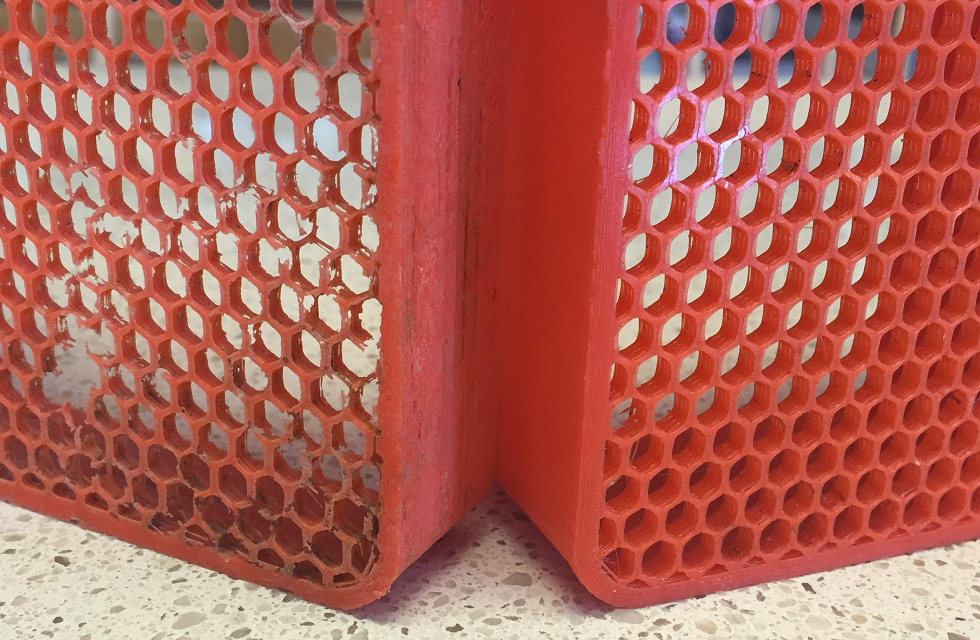
Hackaday’s recent story about PLA biodegradability got me thinking more about PLA’s characteristics.
PLA, or Polylactic Acid, is a “biodegradable thermoplastic aliphatic polyester”, made from organic, renewable materials. Its 3D printing characteristics (mostly its resistance to warping) has made it possibly the most popular plastic for desktop 3D printers, and the eco-friendly aspects don’t hurt, too.
The general belief is that PLA actually is biodegradable, and prints will eventually disappear if buried, tossed in the ocean or otherwise dealt with.
But is this actually true? I’ve often heard rumors that if you drop a PLA print into a bucket of water it will eventually loosen up and dissolve away, but I’ve never actually tried that.
The Hackaday story points to two actual instances where such an experiment (although accidental) was performed.
In one case involving 3D print operator Bill Waters, prints were being dyed in jars, and one was forgotten for no less than three and a half years! What happened? Evidently nothing:
In 2012, he was experimenting with tie dying PLA prints by putting his prints in a jar filled with water and blue dye. This jar was then placed in the back of his cupboard and quickly forgotten. 3.5 years later, [LazyGecko] remembered his experiment. Absolutely nothing happened, save for a little bit of blue dye turning the print a pastel baby blue. The print looks and feels exactly like the day it came off the printer.
In another accidental experiment, prints were placed in a fish tank. One degraded significantly over the course of a year (see image above), but the other remained stable, leaving inconclusive results.
But this uncertainty over degradation might be due to chemistry: Not all 3D printer filaments are the same. Most include coloration, and many are actually blends with other materials.
Consider colorFabb’s COPPERFILL. It’s a PLA blend that contains a significant percentage of fine copper powder, and is an excellent way to achieve metal-like prints without a true metal 3D printer. But does it degrade? Even if the PLA dissolves away completely, you’re still going to be left with a pile of copper. PLA filament made from blends with other plastics will react similarly: the other material may remain after the PLA disappears, or it may even protect the PLA from degradation.
So, the answer to the question, does PLA degrade? is simply, “it depends”.
Via Hackaday and Bill Waters

